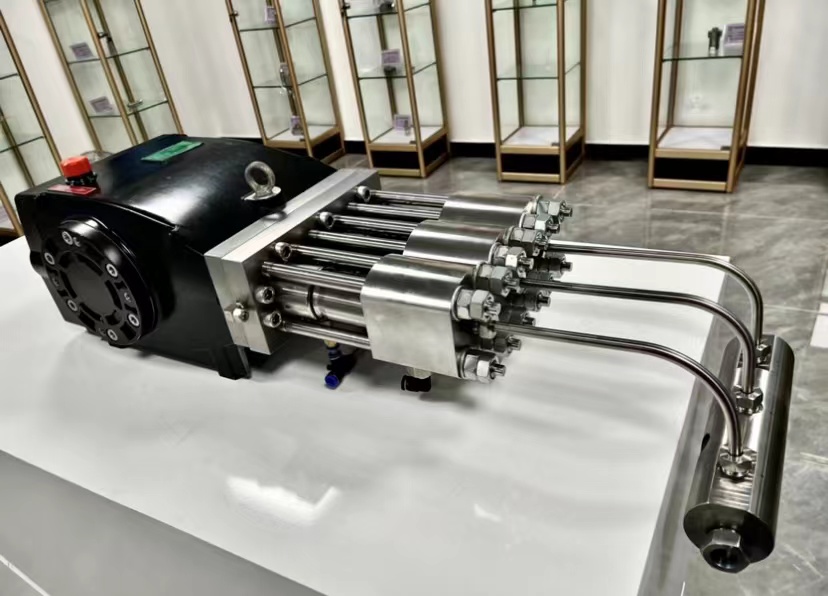Benefits of Waterjet Direct Drive Pump
2024-07-09
A waterjet direct drive pump is a critical component in waterjet cutting systems, known for its efficiency and reliability in delivering high-pressure water for cutting a wide range of materials. Here’s an overview of the waterjet direct drive pump, including its operation, benefits, applications, and considerations:
Operation
1. Direct Drive Mechanism
- Direct Coupling: The pump directly connects to the motor shaft without intermediate components, enhancing efficiency and reducing maintenance requirements.
- High Speed: Operates at high rotational speeds to generate the necessary pressure for waterjet cutting.
2. High-Pressure Generation
- Intensification Process: Utilizes pistons or plungers to pressurize water, often achieving pressures ranging from 60,000 to 90,000 psi (4,100 to 6,200 bar).
- Water Filtration: Includes filtration systems to ensure clean water supply and prevent nozzle clogging.
Benefits
1. Efficiency
- Energy Efficiency: Direct drive systems minimize energy loss compared to belt-driven or gearbox-driven pumps.
- Maintenance: Reduced maintenance due to fewer moving parts and simplified design.
2. Reliability
- Continuous Operation: Capable of continuous high-pressure water delivery, essential for uninterrupted waterjet cutting operations.
- Longevity: Longer lifespan and durability compared to other pump configurations.
3. Performance
- High Pressure: Generates consistent high-pressure water streams for precise and efficient cutting of various materials, including metals, composites, stone, and glass.
- Accuracy: Provides precise control over cutting speed and quality, contributing to superior cut edge quality.
Applications
1. Manufacturing
- Metal Fabrication: Used extensively in industries such as automotive, aerospace, and machinery manufacturing for cutting metal components with high precision.
- Composite Materials: Suitable for cutting composite materials used in aerospace and marine industries.
2. Construction
- Stone and Tile Cutting: Used in architectural applications for cutting stone, tiles, and decorative materials.
- Concrete Cutting: Applies to construction and demolition tasks requiring precise cutting of concrete structures.
3. Art and Design
- Artistic Cutting: Employed in artistic and architectural designs that require intricate shapes and patterns cut from various materials.
Considerations
1. Operational Costs
- Initial Investment: Higher initial cost compared to other pump types, but offset by lower operational costs over the pump’s lifespan.
- Energy Consumption: Requires adequate power supply to operate efficiently at high speeds.
2. Maintenance
- Regular Maintenance: Despite reduced maintenance needs, periodic checks and servicing of components like seals, valves, and filtration systems are necessary.
- Water Quality: Maintaining water quality through proper filtration and treatment is crucial for pump longevity and cutting performance.
3. Safety
- Pressure Hazards: Operators must adhere to strict safety protocols to avoid injuries from high-pressure water streams.
Conclusion
A waterjet direct drive pump is integral to waterjet cutting systems, providing efficient and reliable high-pressure water delivery for precise and versatile cutting applications across various industries. Its direct drive mechanism ensures energy efficiency, reduced maintenance, and consistent performance, making it a preferred choice for applications demanding high cutting precision and quality.



